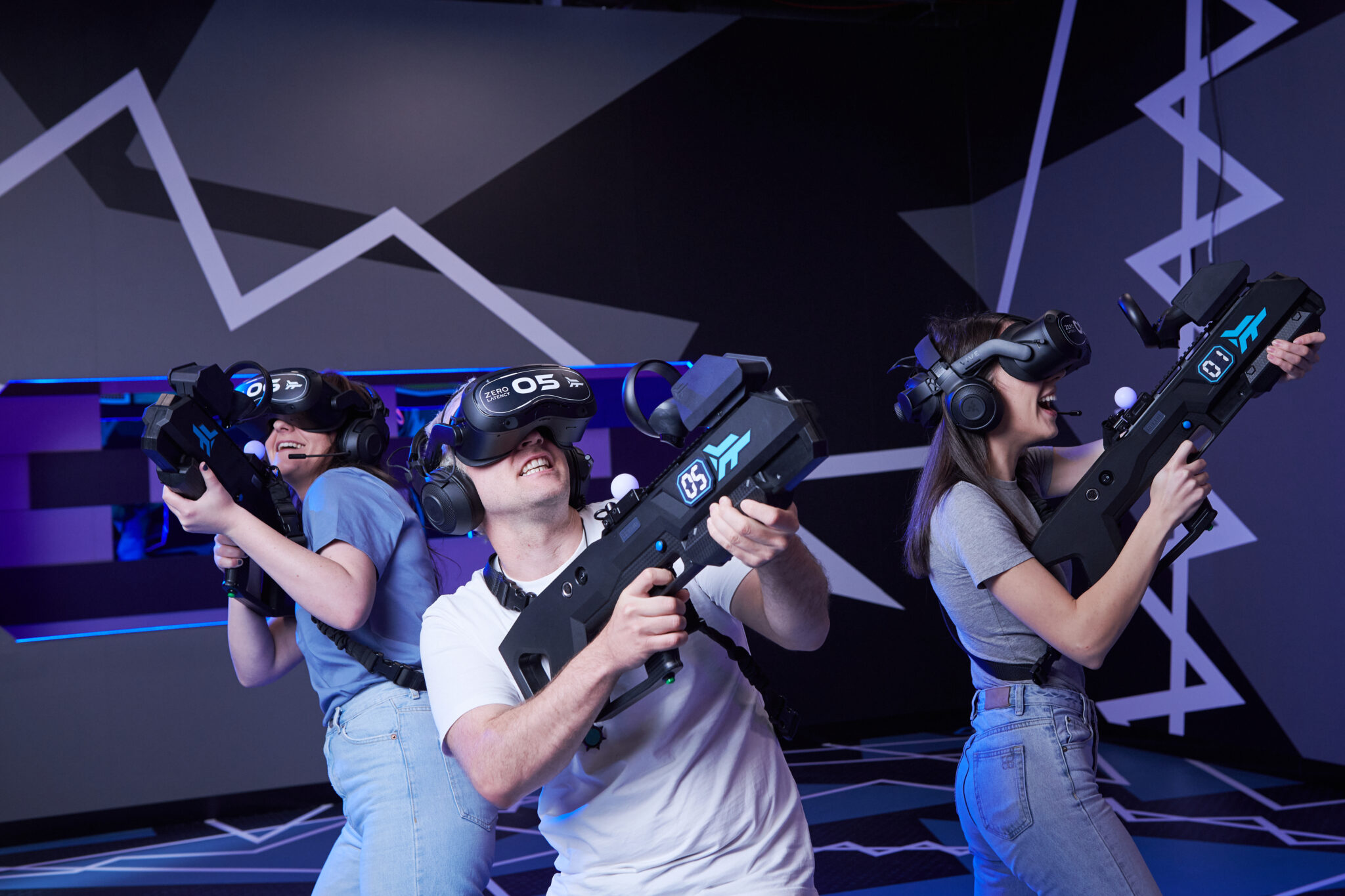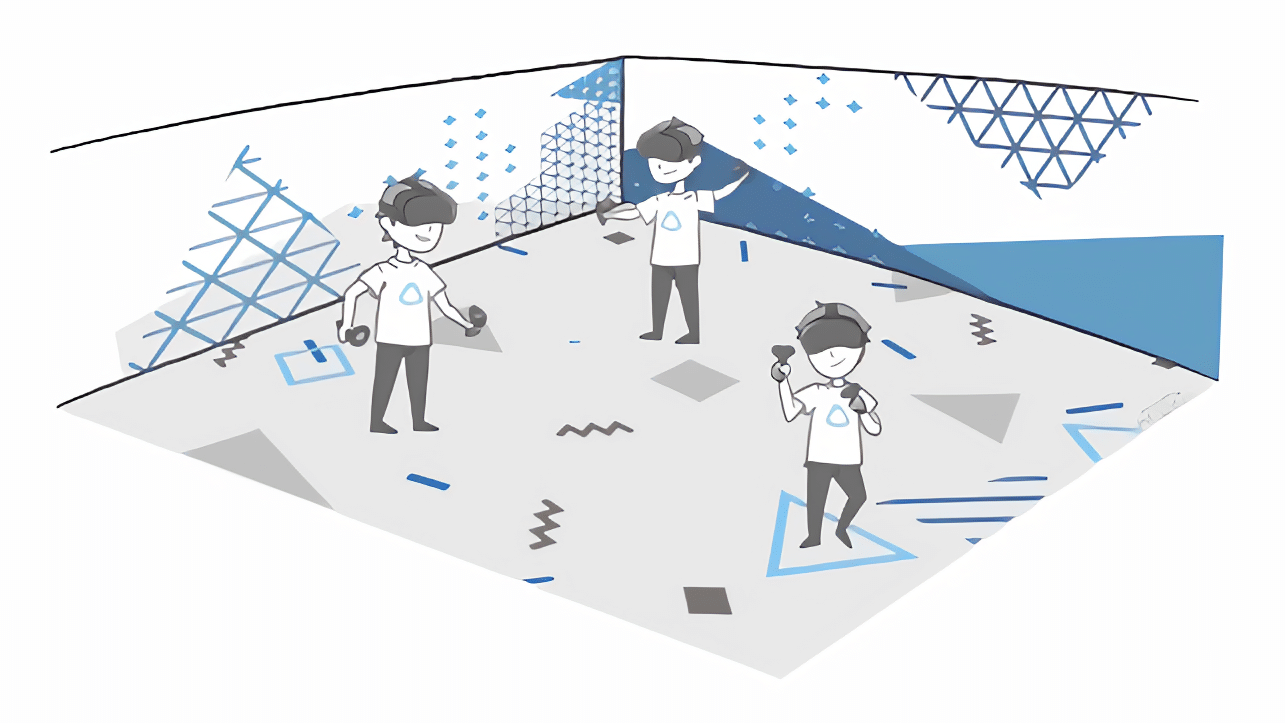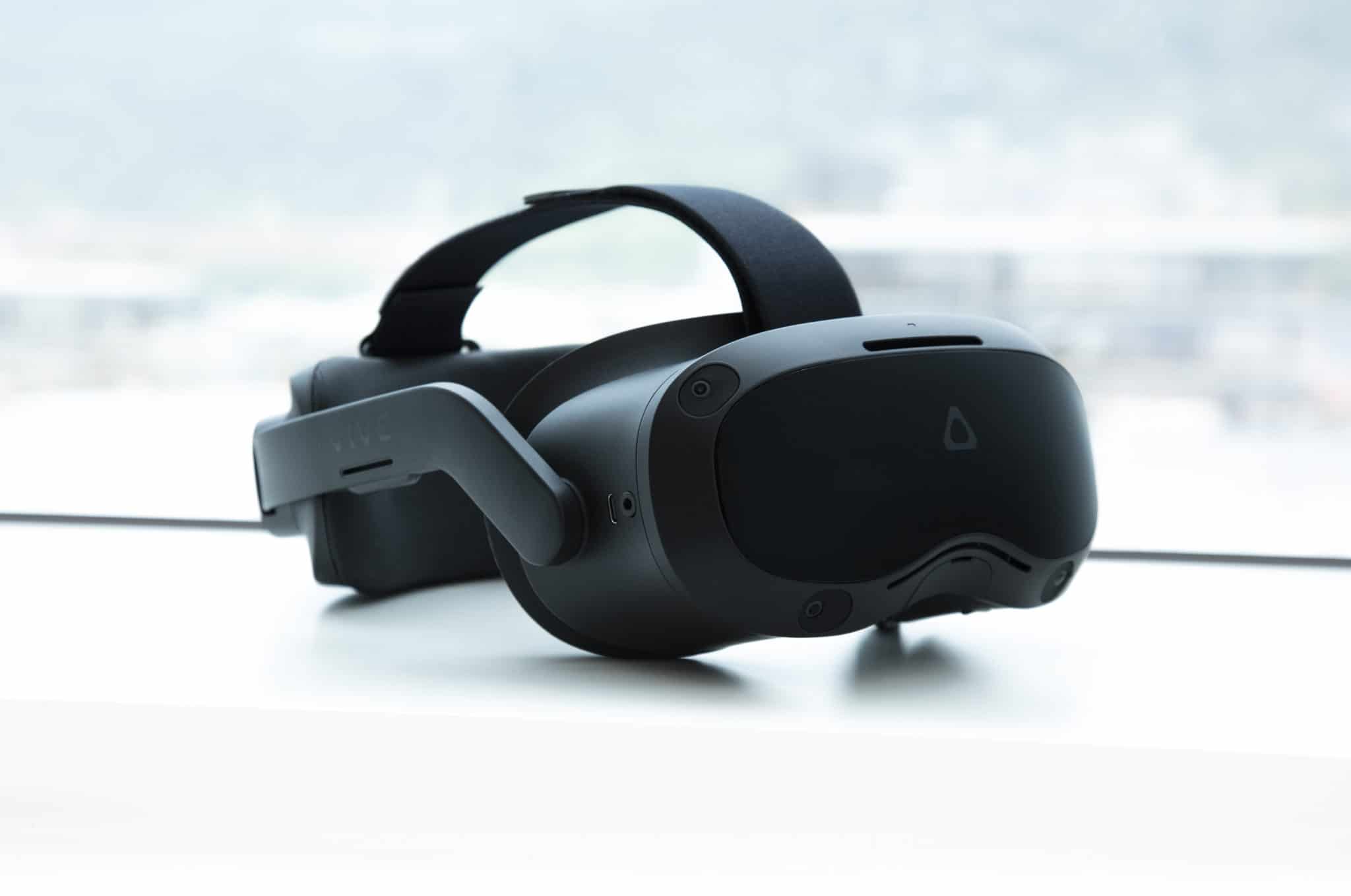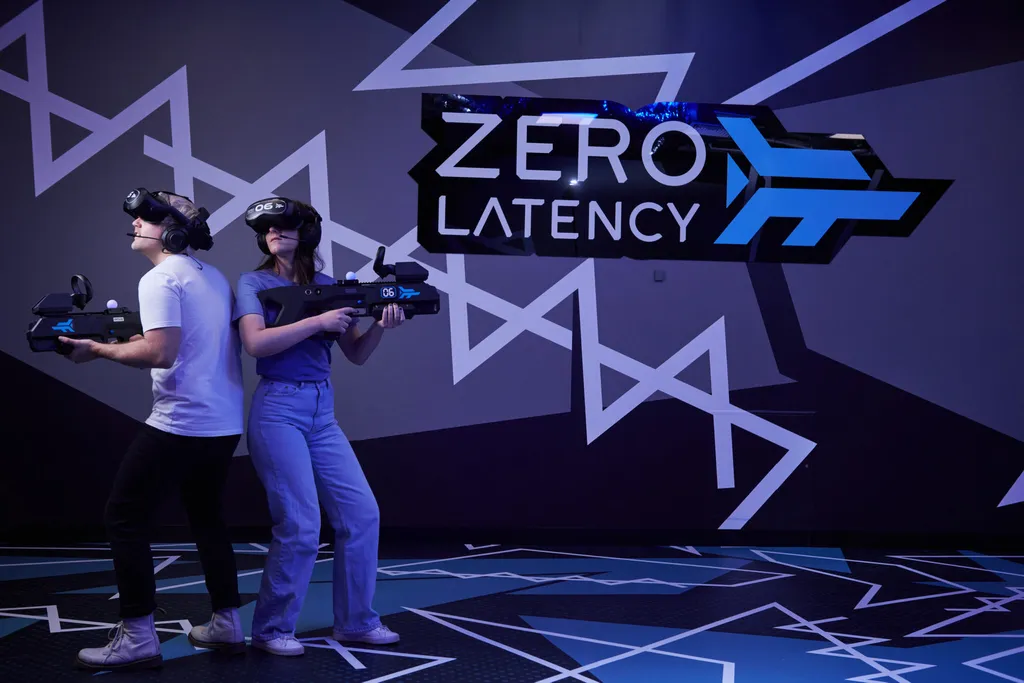Just a few weeks ago Zero Latency announced some upgrades which include ditching the heavy backpacks and opting for a new system that wirelessly streams content to headsets from on-site PCs. After a demo at the company’s Docklands location in Melbourne, I can see the appeal.
I’ve tried Zero Latency twice before, and while both times were enjoyable, there were limitations with the tracking capabilities and comfort options for each player. It was a good location-based experience but it also wasn’t perfect.
New and existing venues, however, will now move to a new system. The heavy backpack PC and HP Reverb combination is being phased out in favor of a new solution where players are fitted with a standalone headset — a HTC Vive Focus 3 — and a gun peripheral. All of the content is now rendered by on-site PCs streaming wirelessly to each player’s headset. It supports up to eight players per session and uses cutting edge Wi-Fi 6E technology.

Wi-Fi 6E, which uses a higher frequency 6GHz band, is so new that it hasn’t even been approved by most national regulators yet. Australia is one of the first countries to do so, which has allowed Zero Latency to set up its new Docklands venue in Melbourne as the first with the wireless system.
Getting rid of heavy backpack PCs provides a smoother experience for both staff and players, while also significantly cutting down on the pre-session briefing and setup time. During the sessions, players are more free than ever and much less restricted in movement without the backpack and its associated straps and cords. Everything feels much more seamless and accessible.

From a technology perspective, I was worried that the new system might fall victim to unreliability and high latency — two well-known pressure points for wirelessly streaming VR content. However, coming out of a demo last week, I was pleasantly surprised at how smooth and reliable everything was. For the overwhelming majority of my near-45 minute playtime, I experienced little-to-no hiccups in terms of streaming performance — just two very brief freeze frames lasting barely a second. Otherwise, the headset fed me reliable, high-quality visuals that remained steady throughout. The tracking was also noticeably improved and seemed less glitchy than my previous Zero Latency sessions a few years ago.
That being said, it’s still not completely matched to locally-rendered VR on a Quest 2 or a wired PC VR system. Experienced VR users will likely notice a tiny amount of latency, most prominent when physically moving around the play space. It’s more noticeable than Oculus Link, for example, but I didn’t find it detrimental to the experience in any way. Importantly, it was never enough to make me feel uncomfortable or nauseated. Likewise, those with a keen eye might also notice that the image quality is very good, but still compressed for streaming performance — again, a minor nitpick.
It’s unlikely most players would be bothered by — or even notice — these differences and they feel like acceptable trade-offs for the overall improvements in every other area. This was my most comfortable, reliable and enjoyable session at Zero Latency yet, by quite a long shot.

The move to the HTC Vive Focus 3, pictured above, is also a huge upgrade. I found it to be the most comfortable headset offered by Zero Latency yet, while also significantly easier to fit and adjust to my liking. Best of all, there’s an IPD dial on the bottom of the headset, allowing you to easily and precisely adjust the lens distance at any time — a crucial option to avoid nausea and increase comfort.
While the Docklands location in Melbourne is the first to get the new technology, the plan is to roll it out across all new venues and upgrade existing ones as soon as possible. Speaking with Zero Latency CTO Scott Vandonkelaar after my demo, he told me that one of the bigger roll-out hurdles is simply waiting on Wi-Fi 6E certification in other countries.
That being said, once that comes through, the new system should be cheaper and quicker to set up than any other Zero Latency system so far — the setup time for Docklands was just one day, down from several days or even weeks with previous systems.
While the current plan is to continue using on-site PCs for rendering, Vandonkelaar also told me that they’ve experimented with remote cloud rendering in certain areas. That comes with some expected trade-offs — an increase in latency and decrease in bitrate — but Zero Latency says preliminary testing has found those numbers still within an acceptable range. It would likely be decided on a case-by-case basis according to location, but Vandonkelaar says it could become a viable option in the future.
It will be interesting to see how Zero Latency develops its content offerings for this new generation of location-based VR. At Docklands, I tried Zombie Arena, a experience developed in-house, and part of Far Cry VR, brought to Zero Latency in partnership with Ubisoft and developed by nDreams. While the former was still quite enjoyable, it was the latter that was more visually impressive and likely more compelling to casual audiences.
While Vandonkelaarwas remained tight-lipped, he hinted that more content partnerships might already be in the works. Popular properties like Star Wars and Avengers helped draw people to The Void locations pre-pandemic, so we’ll be watching to see if Zero Latency is able to bring a similar level of new content to its locations with this new setup.
Zero Latency’s new wireless system is up and running at Funlab’s Archie Brothers Cirque Electriq in Docklands, Melbourne and is expected to make its way to select sites in the United States and Europe this summer.





























